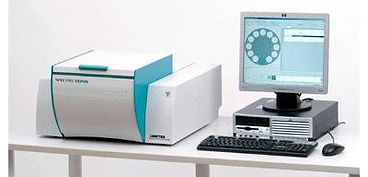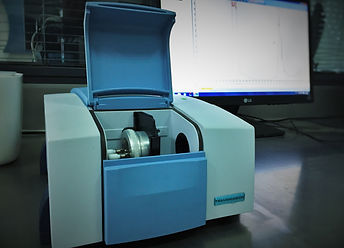
USED OIL ANALYSIS
To see an example of sample report, please click here
Used Oil Analysis reflects:
Categories of used oils analyzed:
Oil analysis is essential for assessing the health of equipment operation.
A sample of oil provides crucial information that can help:
-
Increase productivity
-
Reduce unscheduled downtime
-
Improve equipment durability
-
Lessen lubricant consumption
-
Assess condition of the oil
-
Evaluate condition of the equipment
-
Improve the environment in which the equipment operates
-
Overall, save money and time
-
4-stroke engine oils
-
CODA (2-stroke engines oils)
-
Hydraulic oils
-
Turbine oils
-
Gear oils
-
Thermal oils
-
Other types of industrial oils
Routine tests :

Viscometrics
-
Kinematic Viscosity @100°C & @40°C i.a.w. ASTM D7042
-
Viscosity Index i.a.w. ASTM D2270
Increase of Viscosity:
-
Oxidation
-
High Contamination (wear metals /soot)
Decrease of Viscosity:
-
Oil Consumption
-
Fuel Dilution
-
VM Degradation

Total Base Number – TBN:
-
ASTM D 2896
-
Monitor the remaining alkalinity of over based detergent additives
Increase of TBN:
-
Oil Consumption
-
High Temperature
-
Too low Viscosity
Decrease of TBN:
-
Fuel Dilution
-
Fuel Quality
-
Too long drain period
Total Acid Number – TAN:
-
ASTM D 664
-
Monitor the oxidative degradation of an oil.
Increase of TAN:
-
Oil degradation
-
High acid concentration in oil

Flash Point:
-
ASTM D 93
-
Detects flashpoint of lubricant
-
Lubricants are estimated to have a flashpoint above 190 °C
Decrease of flashpoint:
-
It’s possible that there is a fuel leak.

Water Content:
-
ASTM D 6304
-
Determination of water content in lubricants
Increase of water content:
-
Indicates that there is water inflow in the system.

ICP – OES:
Wear Metals / Contamination:
-
Iron
-
Chromium
-
Lead
-
Copper
-
Tin
-
Aluminum
-
Nickel
-
Silver
-
Silicon
-
Sodium
-
Vanadium
-
Cadmium
-
Lithium
-
Manganese
-
Titanium

ED – XRF :
Additive metals:
-
Phosphorus
-
Calcium
-
Zinc
-
Molybdenum
-
Magnesium
-
Barium
-
Sulfur

Infrared Spectrometry FT – IR:
-
Nitration: Premature thickening of the engine oil (natural gas engines)
-
Sulphation: Increased viscosity and varnish, sludge, sedimentation
-
Oxidation: See corrosion in machinery parts in high concentrations
-
Soot Content: Severe engine wear

